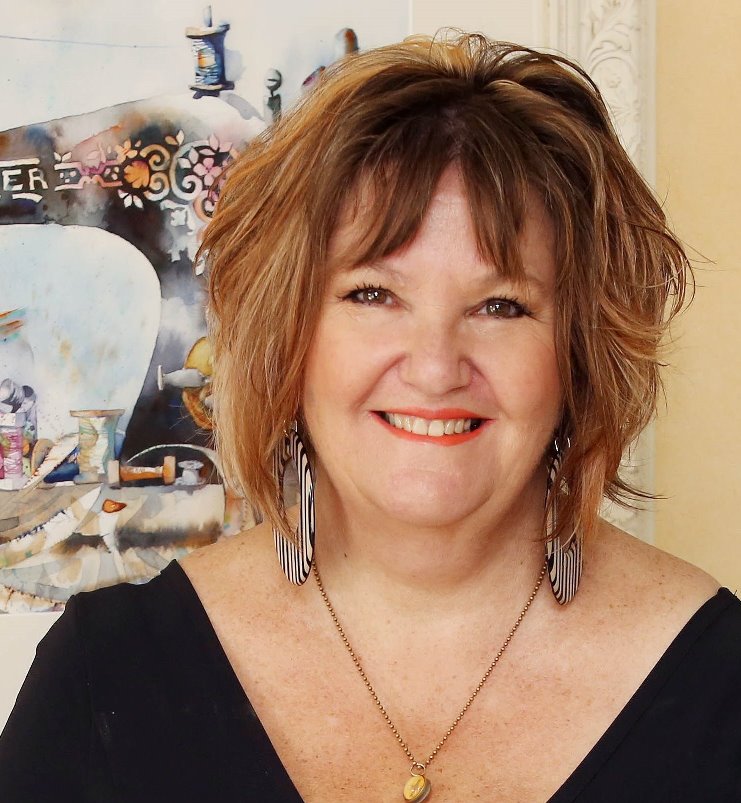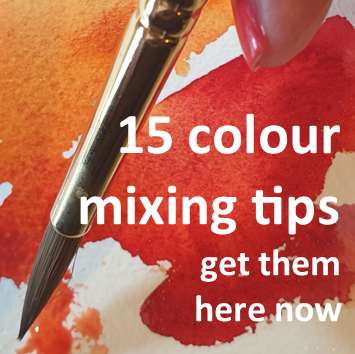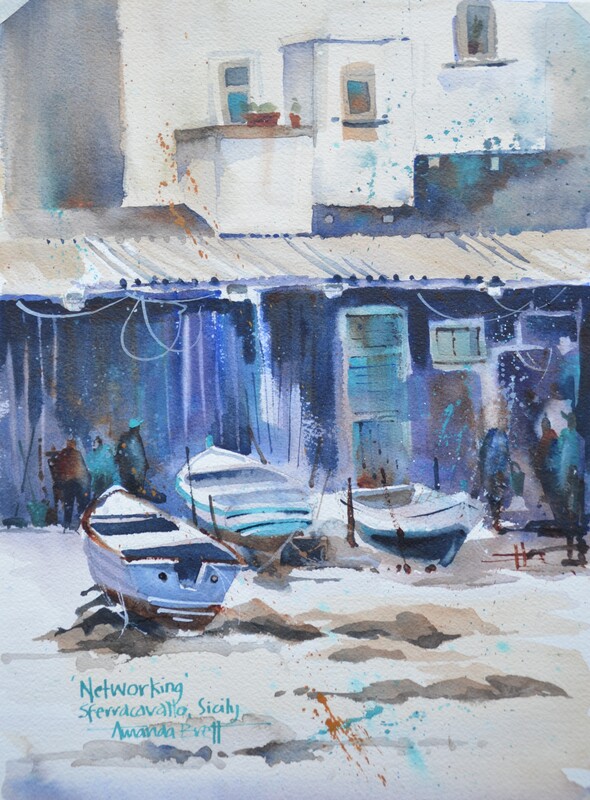 Networking, Sferracavallo Sicily Networking, Sferracavallo Sicily
I get many emails and questions about my palette, ie, the colours I have selected.
It took me a long time to get to this palette but once I decided it was an obvious choice. For what seemed an interminable length of time, I was on a continual search – what colour for this? What colour for that? In the end (really it was a new beginning) I selected transparent primaries that would allow me to mix super rich darks and any other colour, cool, warm – whatever I would need! My current foundation palette is made up of 3 transparent primaries plus Burnt Sienna (my most favourite colour and pigment). On my palette is Permanent Alizarin Crimson, Winsor Blue (Red Shade) and Quinacridone gold. Another primary triad I keep on my palette is Winsor Blue (green shade), Permanent rose and raw sienna. Temper this info in that I mostly use quinacridone gold and burnt sienna for mixing greens and neutralising. All these colours work beautifully together mixing secondaries and other cool or warm versions. Sometimes I dip into other workhorse pigments including French Ultramarine, Winsor Green, Yellow Ochre, Indian Yellow and cobalt blue. Avoid dependency on online colour "recipes", much of the fun in painting is playing with your colours and making your own discoveries everyday. Further this play will set you up for learning your likes and dislikes (eg colour, pigment, medium and paper etc) and lead you to your own process of creativity. I always start my day playing with colour which leads me into inspiration and more creative sessions. To be truthful, going to the art shop is like going to the candy store … so hard to resist all those amazing colours!! Further, its even harder to resist sets of colour! However, I find a set of colours is like buying an eyeshadow palette, half of which I won’t use. In the long run it’s better and more economical to choose a foundation palette of good quality transparent primaries plus a couple of “exotics” to make yourself happy!! See my vlog #129 As always, I am very grateful for every thumbs up, so please click below if you liked this article. I’d also love to read any comments on this theme, so let me know your thoughts below. Ciao cari pittori
0 Comments
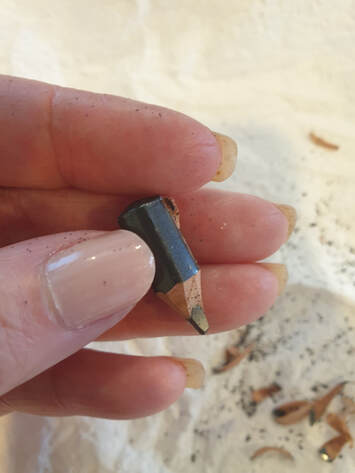
Some thoughts on drawing!
Drawing skills are essential. Your painting will improve out of sight just by spending 10-20 minutes observational drawing every day. Shapes must be good - note I didn't say "perfect". "Good" can also mean interesting, unique or beautiful. Design your artwork with design principles in mind. Accomplished drawers/designers/artists can and do paint without drawing on their paper BUT 99.9% will have mapped out their design idea as a sketch first and will have spent much time studying and researching and planning – they’ve possibly painted a similar subject 500 times before – they know it well but have found a new intriguing “thing”. Some watercolour tutors disagree with this, it shows in their work. Drawing can become a 5-minute exercise in order to create a good painting (oil, acrylic, watercolour, sculpture, pastel), it doesn't matter the medium, art is art. "Wrong" marks are full of character and shouldn't be erased (unless they're really annoying and stuck in your head then have at it!). It takes skill and practice - draw every day, start simple. An eraser is not an essential tool but your sharpening device is. There are many different purposes for drawing, some for me are:
The word "perfect" must be stricken from your vocabulary - it is meaningless because it can't be articulated, is subjective and stops us from doing what we really want to do! Please comment and ask me questions and let me know how you're getting on!! 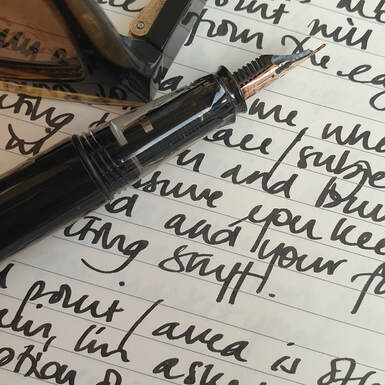
I thought I would tell you one of my dirty little art secrets …
I use scrap paper to sketch on. All these beautiful sketch books I’ve acquired over the years and I still prefer a scrap of paper!! When I first started coming to Italy I decided I needed a more methodical approach, 4 months of painting immersion and thinking time! Somehow I've ended up with a couple of softcover sketch and notebooks, maybe that's what I could get at the time - never again!! Most often I like to sketch/write with my book on my knee, if I'm standing, a hardcover book is essential. let's hope the lesson is learned!! You just reminded me, Dad used to staple books for me and apparently, one day as he was finishing a new one for me, guests arrived and I announced to them "my Daddy's a bookmaker!" Mum just about had a kanipshin!! I've changed my MO to compensate for my knee (which is a lot better btw!) and the heat. But I have to say that because of this blasted ginocchio problem my fitness is right out the window. I've done a few paintings on location but now I'm painting in my studio. My usual practice al momento is to have my colazione out and sketch while I’m partaking – not necessarily what’s in front of me but whatever’s on my mind or an idea I’m fooling about with. I brought my usual A5 moleskin sketchbook to Italy and as usual I also brought a wad of Zeta paper folded up and jammed in my work bag. I’m amazed that this year, I’ve done more sketching (in and out) than ever before. I’m so pleased because it’s been a hard trip with bugs, knees and heat and all!! The funny thing about the scrap of paper is that, when I had my business, I would walk into my client’s office with my PDA (I was on top of the technology game back then) but I would fish around in my bag for a scrap of paper to write my notes on. It got to a point where I would walk in and my client would automatically rummage in their waste bin and hand me a scrunched-up envelope! I tried so hard to up my game with the flashy PDA but back then they were very limited and nothing more than a piece of paper in disguise! Note to self, don’t upgrade until everyone else has tested them first and the upgrade model has been released! It’s a bit of a shame to use scrap or loose paper. It’s harder to record and archive the action, that said, I can lay my hands on any sketch or working quite quickly, I know it will be in the nasty pile. However, a sketchbook is an easier, more methodical approach to record keeping ie dates and evidence that “this is my original work". If you don't want to show people the rough stuff, have 2 sketchbooks, 1 for the workings and nasty stuff and another for more developed work to show people. I promise to be more organised with less rubbish bin fossicking!! Magari!! ciao bei pittori!! |
AuthorPaintBox Tips, secrets, random thoughts, Poetry in watercolour is made in the freedom of the here and now. Amanda Brett Inspiration exists, but it has to find you working - Pablo Picasso There are no mistakes in watercolour, just some extra surprises!! Categories
All
What my readers and viewers have to say
Your emails are so informative! I must confess I've watched a couple of your demos from beginning to end, and it makes me want to watercolor!!! I've only ever painted with oil or acrylics and haven't know how to begin with WC. Your content is excellent!
Susan VN Hi Amanda
Thank you for your tips. They inspired me to practise and I realised I haven’t been loading the brush properly. I learnt about adding more paint, and not water, to washes. In today’s tips I like the idea of painting with purpose. Your tips are very helpful. I very much appreciate receiving them. Elizabeth Hi Amanda I enjoyed your post and generous tips. Looked up Dan Burt I begin to see that you can colour any subject to give it pizazz so long as the tone and form is correct Certainly adding value now to my attempts Thanks heaps Annie
Yes very wise words. Agree with not fussing and agree with comments about good quality paint. Well written and inspirational as always. Cheers Janet xxxx Archives
July 2023
Copyright © 2022 All images and text on Amanda's blog and website are the the legal property of Amanda Brett and may not be reproduced without express permission from Amanda Brett or her authorised agent. Thank you for respecting her art and the livelihood of all artists.
|



